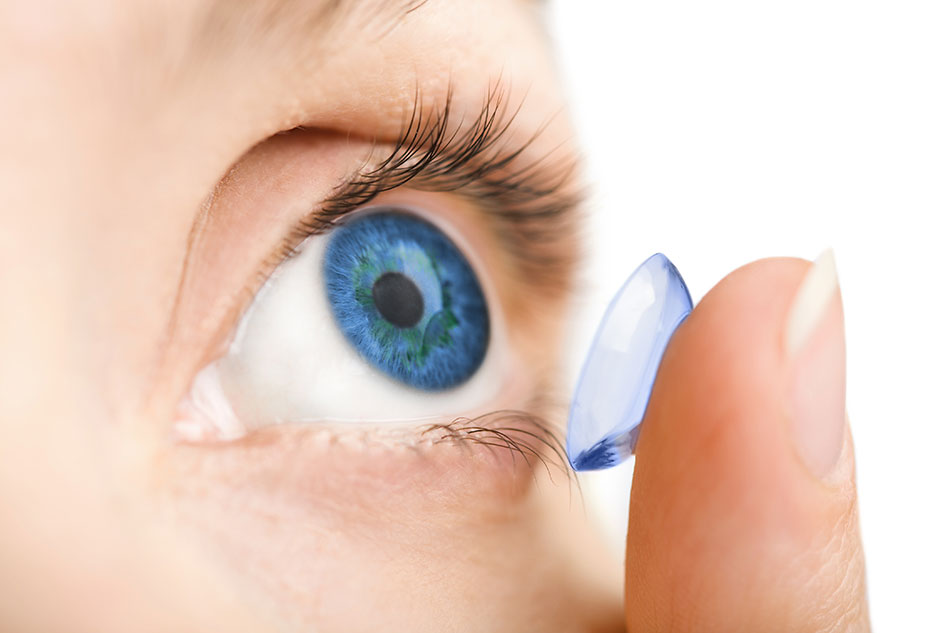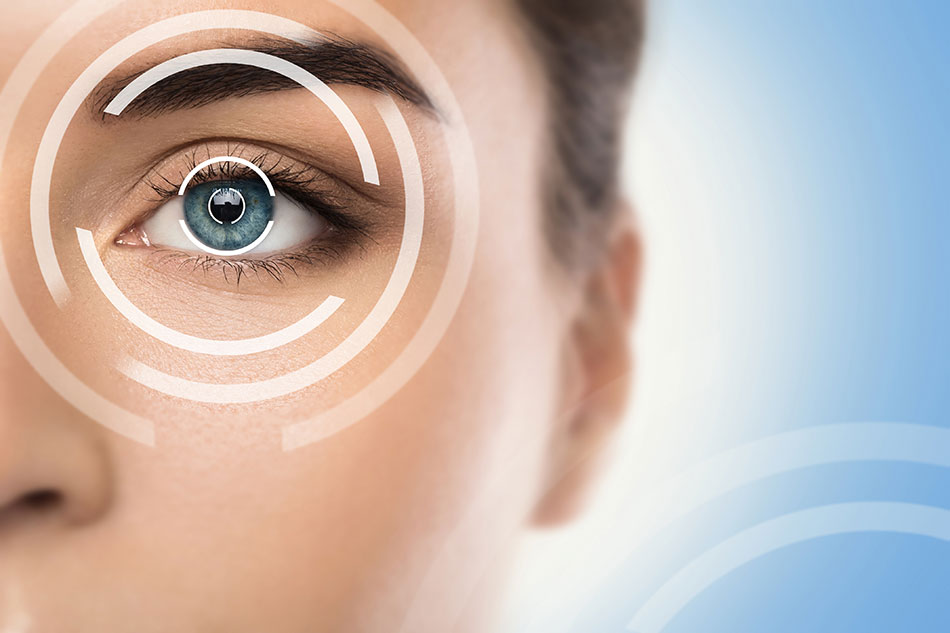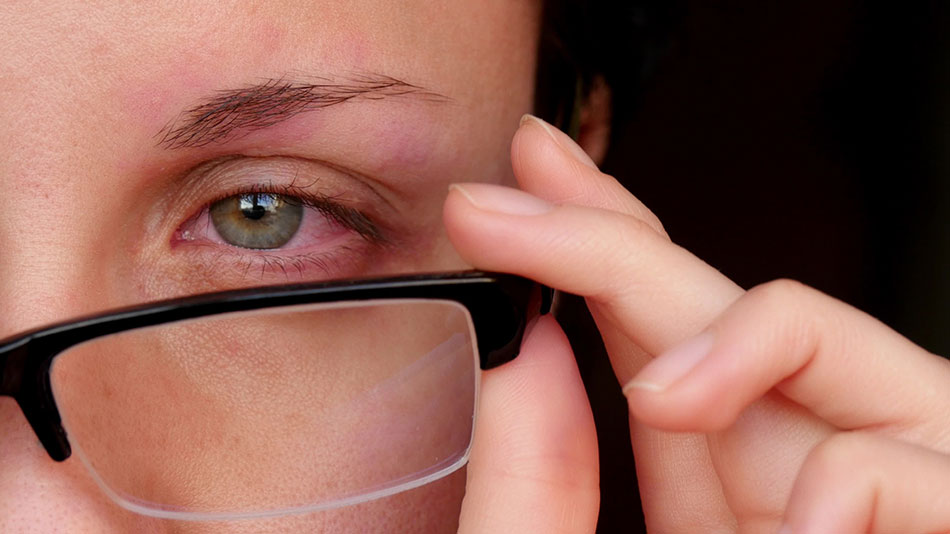Are Your Contact Lenses Breathing? How Contacts Affect Your Eye Health

When choosing contact lenses, your options are endless. Do you want extended wear, monthly, or daily disposable contact lenses? And do you prefer hard or soft lenses? Tinted or transitions? With so much to consider, it’s easy to overlook breathability.
Your contact lenses breathing can make a huge impact on the overall health of your eyes. It can also make a significant difference in your everyday comfort. To help keep your eyes healthy and your vision sharp, you need to know how your eyes, and your lenses, breathe!
How Our Eyes Absorb Oxygen

The cornea is a transparent layer of tissue that covers the front part of our eyes. This includes our pupil, iris, and anterior chamber (the inside of our eyes). It is completely clear and does not contain any blood vessels. Blood vessels are important because they provide body tissue with nutrients and oxygen.
Instead of blood vessels, fluid in the anterior chamber keeps the cornea nourished. But the cornea also needs oxygen and the only way to get it is to absorb it from the air. Oxygen dissolves in our tears and then goes to where it's needed in the cornea. The same mechanism expels carbon dioxide from the cornea into the environment.
Contact Lenses and Oxygen Absorption
If your contacts stop the process of gas exchange, your vision can suffer. When this happens, the cornea can change shape, become cloudy, or develop scarring. New blood vessels from the sclera (the white of the eye) can grow into the cornea. This scars the surface further and clouds your vision.
The cornea can also become hypoxic. Lack of oxygen causes the cornea to become stressed and produce a buildup of lactic acid. This acid draws water into the cornea from the arterial chamber. When this happens, it creates dangerous swelling called edema. We all experience low levels of edema when we sleep. But when you add contact lenses to the mix, this level can become troublesome.

That's why contact lens manufacturers strive to make breathable lens technology. Different types of contact lenses supply our eyes with oxygen in different ways. With traditional rigid lenses, blinking pumps a small amount of oxygen under the lens. With rigid gas permeable lenses, oxygen also diffuses through the lens itself.
Most people prefer soft contact lenses, also known as hydrogels. Hydrogels fit snugly over the cornea and do not pump oxygen under the lens. Instead, oxygen reaches the cornea by diffusing through the water present in the lens. The higher the water content of the lens, the higher the level of oxygen available to the eye.
Today, many soft contact lenses consist of silicone hydrogel, the most breathable lens material to date!
The Benefits of Silicone Hydrogel Lenses
Silicone hydrogel contacts first hit the market in 1999. Today, nearly half of all contacts made are silicone hydrogels. In the United States, eye doctors prescribe up to 90 percent of these lenses for daily wear. They also prescribe silicone hydrogel for 87% of bi-weekly and monthly lenses.
Silicone hydrogel refers to the material in the contact lenses, not the type of lens. They come in spherical, toric, and bifocal varieties. They can also be custom made to fit your eyes. Wearing schedules include daily disposable, two-week daily wear, and one-month continuous wear.
The biggest benefit of wearing silicone hydrogel contact lenses is their breathability. They allow up to five times more oxygen to pass through to the cornea than typical hydrogel lenses do. This significantly lowers the risk of corneal hypoxia. It also makes silicone hydrogels perfect for extended and daily wear.
Silicone hydrogel lenses help minimize common contact lens issues. These include dry eye, corneal swelling, and infections. This is due in part to their high moisture content and relative flexibility. These contacts are also more resistant to protein deposits. They’re easier to handle than soft hydrogel lenses, too.
But there are also some disadvantages when switching to silicone hydrogel lenses. They can be more expensive than non-silicone ones, particularly the daily disposable varieties. Also, these lenses are a little more rigid than standard hydrogel lenses. Some people may find it difficult to adapt to them.
The Silicone Hydrogel Lenses That Breathe the Best

There are new types of silicone hydrogel lenses hitting the market all the time. Here are a few of the most popular and well-reviewed brands:
- Johnson & Johnson’s Acuvue Oasys lenses are approved for two weeks of daily wear. Or you can continuously wear them for up to six nights. With Hydraclear® Plus technology, Acuvue Oasys lenses keep your eyes moist 24/7.
- Night & Day Aqua lenses from Air Optix are approved by Health Canada for up to 30 nights of continuous wear. These lenses claim to allow for the most oxygen flow out of any available soft contact lens. They are also recommended for those who wish to sleep in their contacts.
- CooperVision’s range of Biofinity lenses feature exclusive Aquaform® Technology. This is their proprietary silicone material. You can wear these contacts for up to seven days in a row.
Those with more complex prescriptions can wear specialty lines of Biofinity lenses. They can be found online from vendors who sell multifocal and toric varieties. (Note: at the time of this writing, PerfectLens.ca does not offer these specialty lenses.)
Final Thoughts
Your eyes are unique, just as you are. People respond to silicone hydrogel lenses in different ways. Before trying out contact lenses, schedule an appointment for a comprehensive eye exam.
Having one done will give you an up-to-date prescription. Using an expired prescription can contribute to conditions such as eye strain. An exam can also determine if these particular lenses are suitable for your eyes. During your exam, your eye care professional can detect early signs of eye disease. Plus, they can treat other eye health complaints you may have.
That’s why it’s important to have eye exams on a regular basis. And while there, you can discuss the benefits of your contact lenses breathing. That way, your eyes can be happy and healthy!
